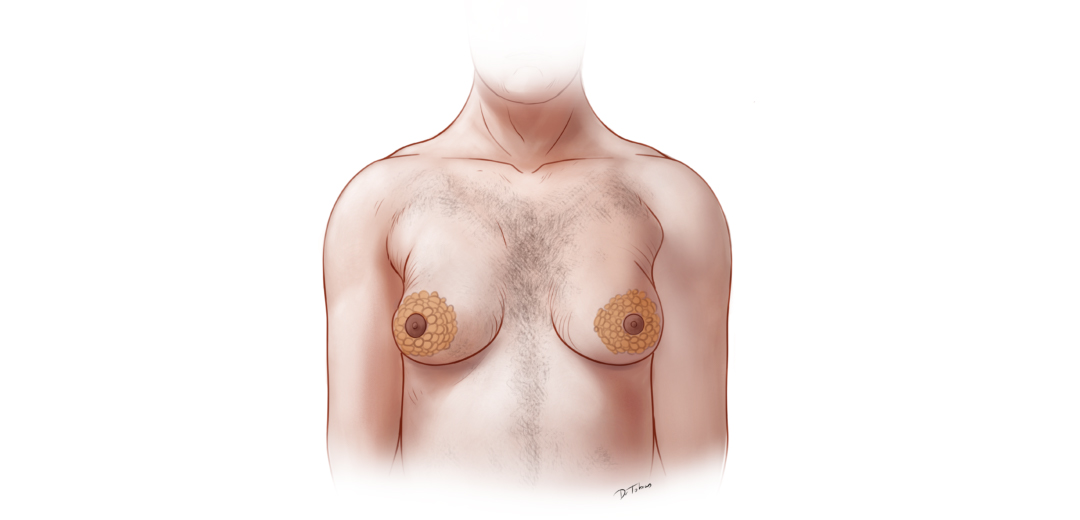Gynecomastia
What is gynaecomastia?
Gynaecomastia is the enlargement of breast tissue in men.
It is important to distinguish between gynaecomastia and lipomastia, which may appear somewhat similar. Whereas gynaecomastia is enlarged breasts due to growth of the glandular tissue, lipomastia is enlarged breasts due to accumulation of fat.

How common is gynaecomastia?
Gynaecomastia is a very common condition, especially in adolescents and in men above 50 years of age.
What are the symptoms of gynaecomastia?
Physically, gynaecomastia is usually a benign and painless condition. In a minority, pain and breast discomfort can occur.
From a psychological point of view, having gynaecomastia can be extremely problematic. Especially in adolescents, it can give rise to shameful feelings and a lack of self-esteem, which again can lead to psychosocial and sexual problems.
For most adolescents, gynaecomastia is transient and disappears spontaneously after puberty.
What are the causes of gynaecomastia?
Gynaecomastia can result from an imbalanced ratio between androgens and oestrogens. A hormonal imbalance can for example be caused by an increased level of the oestrogen oestradiol or a decreased level or decreased effect of the androgen testosterone. A temporary imbalance in the oestrogen-to-androgen ratio is likely responsible for many cases of transient gynaecomastia seen during puberty.
In many cases, men develop idiopathic gynaecomastia. This means that no definite cause can be identified despite thorough medical assessment.
In some cases, gynaecomastia is caused by hyperprolactinemia (elevated levels of the hormone prolactin in the bloodstream) or by thyroid disorders.
In a minority of cases, gynaecomastia is caused by an oestrogen-producing or hCG-producing tumour.
Drug-induced gynaecomastia is a common finding and often derives from the abuse of anabolic steroid, anti-androgens, and exogenous oestrogens. Other drugs, including some commonly used gastrointestinal and antihypertensive agents, may also give rise to gynaecomastia. In most cases, symptoms subside following drug discontinuation.
Who should I consult?
If you believe you have gynaecomastia, it is recommended to ask for a consultation with a specialist, e.g. a clinical endocrinologist, who can ensure that you are examined properly and get the correct diagnosis and treatment.
In cases of mental symptoms related to the gynaecomastia, psychological support can be recommended.
How is gynaecomastia diagnosed?
You will have a thorough clinical examination and be asked about your medical and drug history. A physical exam, including palpation of the breast tissue, is required to distinguish between true gynaecomastia and lipomastia
You will have a blood sample taken, which will be analysed for levels of relevant hormones, such as testosterone, oestradiol, and prolactin.
In some cases, scans and imaging techniques are used to determine the nature of the breast tissue.
How is gynaecomastia treated?
As gynaecomastia can be the consequence of a transient imbalance in hormone levels, treatment is rarely suggested in the first place. Rather, reassurance and follow-up are offered.
That said, treatments are available, and can be relevant to use to alleviate some of the psychological symptoms.
Medical treatment in the form of selective oestrogen receptor modulators (e.g. tamoxifene) can be beneficial for some patients and is a relatively non-toxic therapy.
For some men, surgical removal of the excessive breast tissue is an option, which can provide immediate relief from the physical and psychological discomfort.




















